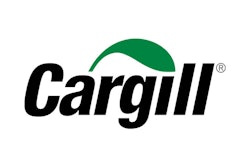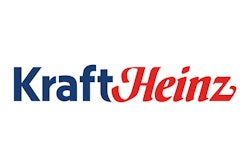A well-designed and well-constructed new facility is easy to be proud of — full of efficient and cost effective equipment and controls, with utilities and processes well matched and resilient in design. Industry leaders rightly focus on up-time reliability and product quality and relentlessly strive to meet the demands of key customers for product performance improvements. But time marches on and even that “new” plant, so carefully designed, built, and maintained has new demands, new competition, and old design assumptions and equipment. Staying competitive has to remain a life-long discipline.
One way industry leaders maintain and increase their competitiveness is to commit to periodically reviewing energy usage with the same intensity used to review other key competitive measures. The relentless pace of global competition combined with rapid changes in today’s energy markets make energy assessments on key processes and utilities more urgent than ever before.
There are multiple factors that make energy assessment challenging. Documentation can one of those challenges, especially with older facilities and equipment, because if the original hardcopy documents are not available, they can be difficult to find electronically. And vendors may have gone out of business, or placed limitations on how far back they archive data on older or discontinued equipment.
Plant leadership availability presents another challenge when conducting an effective energy assessment: Assessments must be scheduled around busy, critical production schedules and maintenance turn-arounds, with plant staff time always at a premium.
However, one of the biggest challenges can be gathering the right data to validate the current needs of a facility and reconcile that against the original design. The equipment and controls the company has been using may have become obsolete in the face of modern production demands, or may be ill suited for the current role. Likewise, measurements that are key to the analysis, such as unit-by-unit utility usage, may not have been seen as important when the system was first conceived.
Armed with data on system performance, it is then possible to look at the financial performance of the assets under good, bad, and normal operating cases. Unlike new equipment designs, where a smaller differential in cost or efficiency may warrant replacement of outdated equipment, existing equipment analysis must consider system modification and the remaining life value of the equipment as well. An in-depth assessment can help determine whether a plant owner should invest in an equipment upgrade or efficiency improvement and prioritize projects with the highest and fastest payback.
Here are some additional approaches and insights:
Effective energy assessments start with planning. When planning an energy assessment, it is important to consider the potential time constraints that may affect the project. Sometimes long-term planning can be derailed when project stakeholders are juggling competing demands. Project team leaders can help provide focus where needed and sustain that focus as obstacles emerge.
An upfront planning session is a good way to accommodate a tighter focus. Allowing ample time to plan and execute is ideal, as emergency assessments are much more challenging. This may mean planning weeks or months in advance to alleviate pitfalls later. Early intervention can help teams plan and operate more effectively, gathering the best data at minimal cost and with minimal disruption.
Another key planning element is to outline the goals early and remain committed to them. Know the budget and time constraints at the outset of planning. It helps to provide the full picture early so leaders see the value of the assessment, thereby justifying the effort and cost. Maintain leadership buy-in with concise but frequent updates on progress.
It is generally not feasible to shut down production or perform complete testing of equipment that is in use. Finding times these resources can be taken out-of-service or tested requires focused planning and plant buy-in to minimize impact to production. If a shutdown is already scheduled, this may seem like the ideal time to conduct testing, but it can be the least attractive time to a focused turn-around team, so make your case early on for your best approach, but don’t be discouraged if your first plan is shot-down. Instead, the best fallback position may be to add a simple connection or instrument that can be used to collect data during startup and or production. Even simple changes need to be planned far in advance as a maintenance or shutdown activity.
Alternately, some tests can be done without disrupting operation at all: Learn when and where non-contact measuring devices can be used to gather data. Remember that where rental equipment or instrumentation is required, more scheduling and lead-time may be involved as well.
Insightfully navigate gaps in documentation and data. Complete documentation is essential for an effective assessment, but “perfect” data does not exist. When gaps in documentation exist, a field assessment is often the solution. While project teams outline requirements and identify missing links, the biggest challenge for field assessments is often scheduling.
Find the keepers of equipment and maintenance records and their schedules. Think about how to minimize the impact on them. When the project team makes the effort to gather 99 percent of the required information, the keepers are more likely assist with the last one percent.
Even the best “real world” plant data is never 100 percent correct or legible. Sometimes the gap is one percent, sometimes 10 percent or higher. Be prepared to gather the first 90 percent on one trip, identify gaps and inconsistencies, and return to reconcile the problems while gathering the rest on later trips. Don’t be surprised when scanned documents are missing “the other side of the page.” Don’t be discouraged when a model number that looked like an “8” turns out to be a “B.”
Sometimes equipment vendors can help fill-in gaps as well. Although on-line documentation on new equipment is generally good, data on existing equipment can be spotty. Distributors and factory reps often have access to older documentation that is not available on-line. Likewise, market consolidation in the last 20 years means the manufacturer of the equipment being analyzed may be part of a much larger company and experienced reps can provide the bread-crumbs needed to find-out who that is and whether any additional “legacy” documentation or support is available. Remember: Making phone calls, sending emails, and waiting for replies can take time, so plan accordingly.
Also, if operating data is being collected, whether from field instruments or from a data collection system, be sure to determine what variables might compromise that data or make it inappropriate for the intended purpose. The collected data should be representative of “normal” operations, with adequate attention to production, seasonal, and daily/nightly swings. Identify enough data points to close heat or material balance or complete a pressure profile. Check if there is at least one additional data point that can be used to help check the assessment and identify instrument problems.
Careful, timely planning and thorough data management will go a long way in keeping track of your facility’s energy usage. Keep an eye out for part II, which will provide even more strategies for keeping your plant competitive in a world with a constantly changing energy market.
For Part II of this article, go here.
Author Bio:
Eric Hopkins, PE, is a Senior Chemical Process Engineer and Senior Associate at SSOE Group (www.ssoe.com), a global project delivery firm for architecture, engineering, and construction management. With 25 years of experience leading and executing industrial process projects around the world, his broad technical background allows him to lead chemical process engineers in addition to supporting projects in areas of energy, chemicals, refining, pharmaceuticals, consumer products, solar materials, semiconductor chemicals, and other manufacturing processes.























